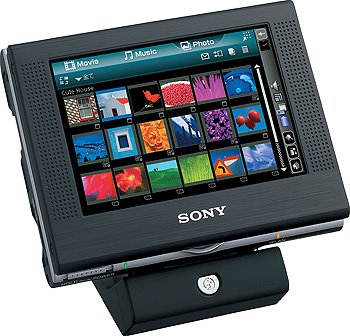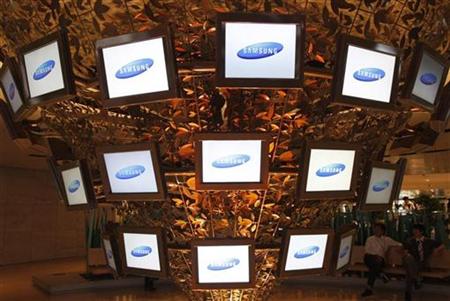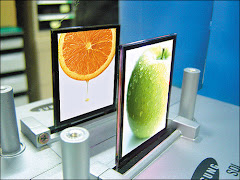SUPER BRIGHT & VIVID, ENERGY EFFICIENT OLED SCREENS
THANKS FOR VISITING OUR BLOG! PLEASE CLICK HERE TO SEE OUR QUICKER LOADING BLOG THAT'S IN BETA STAGE!
ALSO WATCH FOR OUR CONTESTS FOR GREAT PRIZES COMING IN 2009!
OLED (organic light-emitting diode) takes another step forward in its advancement towards becoming more energy efficient as an organic display can be. Chinese chemists have discovered a simple to make soluable iridium complex that boosts the efficiency of the OLED's.
This means the discovery could simplify the manufacturing process plus reduce the processing and manufacturing costs of OLED displays, screens and panels of all sizes and shapes ( ie: FOLED - Flexible OLED).
The OLED screens / displays / panels have a number of advantages over LCD ( Liquid Crystal Displays). The main one being that the light created by OLED, an organic type of technology is by exciting of the organic polymers with a power source compared to LCD which utilizes a backlight method to shine through onto the viewing screen to create the colours and final viewing image. Due to the nature of OLED' s design, they are extremely thin, from 3mm-9mm on average today plus super vivid colours not too mention the ultra-high contrast ratio @ 1 million:1 on the Sony XEL-1 TV for example.
So with OLED there is no backlight, use less power and are super-thin and lightweight, material scientists are working on some very cool stuff that will one day work its way into our daily lives, and not too far into the future by the way things are progressing it seems. The biggest and most pressing issue however with OLED tech is the efficiency of harnessing the light. Light created from the polymers is that it's "emissive" (its own light creation) phosphorescent material layer is then also required in any FPD, this then converts the radiation that would otherwise be wasted, into visible light in turn raising the clarity and brightness as an added boost to the OLED efficiency.
They have discovered that the best materials to increase the efficiency of harnessing those illusive photons, is a complex of iridium (lll) consisting of large cyclic ligands which grant the stability, rapid response time plus access to the colours across the visible spectrum. These added steps however do not come without cost since making these complexes requires pricey catalysts plus high temperatures and applying the catalysts to the polymers is a complex and complicated process. That is why so far OLED screen sizes have been limited to smaller physical sizes to date.
However, it looks like a team from led by Biao Wang at Sun Yat-Sen University, Guangzhou, China, has solved some major issues by developing a highly soluable iridium complex that is easy to make and ultmately could be sprayed onto a surface. The choice of the ligand was the major factor in breaking the discovery open says, Biao Wang, who stated that sterically-hindered phenolic groups was the key. It was apparently " an unexpected event" when they synthesized under mild conditions with no catalysts, simply from iridium chloride, a complex compound, which combines iridium with three phenyl phthalazine-derived ligands.
This is certainly a huge discovery for the upcoming development of larger OLED style FDP's - (Flat Panel Displays), offering better energy savings along with an unimaginable even better picture.
oledevices.com - copyright 2008 - all rights reserved


































































































